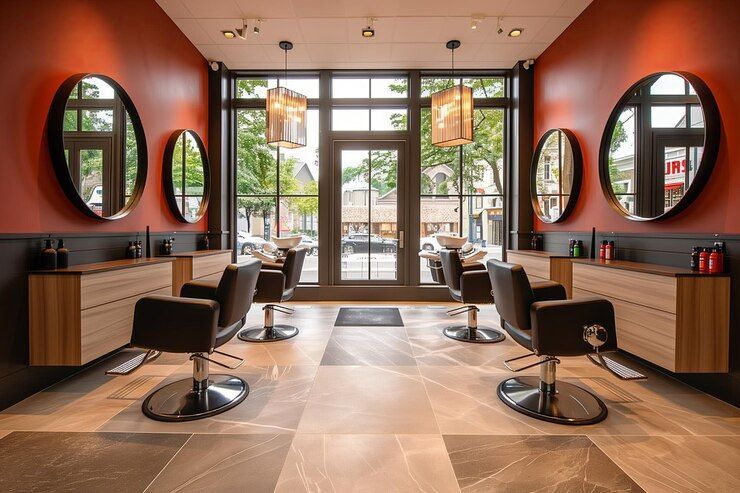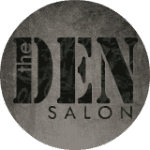The Evolution of Hair Stylist Jobs Los Angeles in the Digital Age
In an era where digital technology has revolutionized nearly every industry, the realm of hair styling has remained relevant.

From the tools used to the way services are marketed and delivered, the digital age has brought profound changes to the profession of hair stylists. This evolution spans various facets, from education and skills required to client interactions and business management. This article explores how digital advancements have shaped and continue to influence the landscape of hair stylist jobs Los Angeles.
Digital Tools and Techniques
One of the most visible changes in the hair styling industry has been the advent of advanced digital tools and techniques. Traditionally, hair stylists relied on scissors, combs, and hair dryers. Today, they utilize high-tech tools such as digital hair dryers with adjustable heat settings, precision hair clippers with digital displays, and even smart mirrors that simulate different hairstyles in real-time.
Digital tools not only enhance the precision and efficiency of hair styling but also provide stylists with more creative freedom. For instance, digital hair color palettes allow for custom color blending, while 3D hair-cutting simulators help visualize and plan complex hairstyles before execution. These advancements have elevated the standards of hair styling, enabling stylists to deliver more personalized and sophisticated services.
Education and Training in the Digital Era
The digital age has transformed how aspiring hair stylists acquire and refine their skills. Traditional apprenticeships and in-person training sessions are now complemented or even replaced by online courses and virtual workshops. Platforms like YouTube and Instagram offer tutorials on everything from basic hair-cutting techniques to intricate braiding styles, allowing individuals to learn at their own pace and from experts worldwide.
Furthermore, digital simulations and virtual reality (VR) training modules have emerged as valuable tools in hair styling education. VR simulations can replicate salon environments and challenging scenarios, providing students with hands-on experience before they start working with clients. This blend of digital learning and practical application not only enhances skill development but also prepares stylists to adapt to new trends and technologies in the field.
Client Interactions and Marketing Strategies
The digital revolution has reshaped how hair stylists connect with clients and promote their services. Social media platforms like Instagram, Facebook, and TikTok have become indispensable marketing tools for stylists, enabling them to showcase their work, engage with followers, and attract new clients globally. Platforms like Pinterest have also become popular for sharing hairstyle ideas and trends, influencing client preferences and expectations.
Moreover, online booking systems and mobile apps have simplified appointment scheduling and client management. These tools not only streamline operations for stylists but also provide clients with convenient access to services and real-time availability updates. Personalized email newsletters and targeted digital advertising campaigns further enhance client engagement and retention, allowing stylists to build strong, lasting relationships with their clientele.
Business Management and Operations
The digital age has revolutionized the way hair salons and freelance stylists manage their businesses. Cloud-based salon management software offers features such as inventory management, financial reporting, and employee scheduling, simplifying day-to-day operations and improving overall efficiency. These platforms also provide insights into client preferences and purchasing behavior, enabling stylists to tailor their services and marketing strategies accordingly.
Additionally, e-commerce platforms have opened new revenue streams for stylists, allowing them to sell hair care products, styling tools, and even digital courses directly to clients online. Social commerce features on platforms like Instagram enable stylists to showcase products and services in posts and stories, driving sales and expanding their customer base beyond local boundaries.
Ethical and Professional Challenges
While the digital age has brought numerous benefits to the hair styling industry, it has also introduced new challenges. Privacy concerns related to client data and online transactions require stylists to adopt stringent data protection measures and comply with regulations such as GDPR. Moreover, the rapid pace of technological advancement necessitates continuous learning and adaptation as stylists strive to stay updated with the latest trends, tools, and techniques.
Furthermore, the rise of influencer culture and social media aesthetics has influenced client expectations, placing pressure on stylists to deliver flawless results that align with online trends. Balancing artistic creativity with commercial viability can be challenging in an era where viral hairstyles and beauty standards can change overnight.
Sustainability and Environmental Impact
In recent years, there has been a growing emphasis on sustainability and reducing environmental impact across industries, including hair styling. Digital technologies have played a role in promoting eco-friendly practices among stylists and salons. For example, digital consultations and virtual hair trials can minimize unnecessary travel and resource consumption, thereby reducing carbon footprints associated with salon visits.
Moreover, the shift towards sustainable hair care products and practices has gained traction, driven by consumer demand for ethically sourced ingredients and recyclable packaging. Stylists are increasingly embracing organic and cruelty-free product lines, supported by digital platforms that educate clients about sustainable choices and encourage eco-conscious purchasing decisions.
Remote and Freelance Opportunities
The digital age has expanded opportunities for remote and freelance work in the hair styling industry. Platforms like Upwork and Fiverr enable stylists to offer virtual consultations, hairstyle tutorials, and personalized advice to clients worldwide. This flexibility not only empowers stylists to reach a broader audience but also allows them to manage their schedules and work environments according to their preferences.
Furthermore, social media influencers and digital content creators have blurred the lines between traditional salon work and freelance opportunities. Many stylists leverage their online presence to attract sponsorship deals, collaborate with brands, and monetize their expertise through digital courses and workshops. This diversification of income streams has enabled stylists to navigate economic uncertainties and build sustainable careers in the digital age.
Conclusion
In conclusion, the evolution of hair stylist jobs Los Angeles in the digital age reflects a transformative journey driven by technological innovation and changing consumer behaviors. From advanced digital tools and virtual training to social media marketing and e-commerce, digital advancements have empowered stylists to elevate their craft, expand their reach, and streamline business operations. However, navigating ethical considerations and adapting to evolving trends remain crucial for stylists aiming to thrive in this dynamic industry. As technology continues to evolve, so too will the opportunities and challenges facing hair stylists, shaping the future of this essential profession in the beauty and wellness sector.












